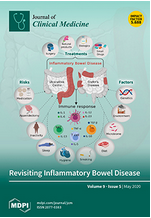 This study aimed to assess associations between performance of the timed up-and-go (TUG) and the six-minute walk distance (6MWD) with physiological characteristics in healthy adults, young and old.
This study aimed to assess associations between performance of the timed up-and-go (TUG) and the six-minute walk distance (6MWD) with physiological characteristics in healthy adults, young and old.
In this perspective, the authors determined the TUG, the 6MWD, the normalized jump power, the displacement of the center of pressure when standing on one leg, the forced expiratory volume in 1 s, the percentage of the maximum heart rate predicted by l age (HR%) in 419 healthy young adults (men: 23.5 ± 2.8 years, women: 23.2 ± 2.9 years) and elderly adults (men: 74.6 ± 3.2 years, women: 74.1 ± 3.2 years).
In conclusion, in men, jumping power was a key determinant for the TUG test, while in older women it was only the percentage of appendicular lean muscle mass. Since the percentage of RH was the most important determinant of the 6MWD test, motivational bias needs to be considered in the interpretation of this test.
